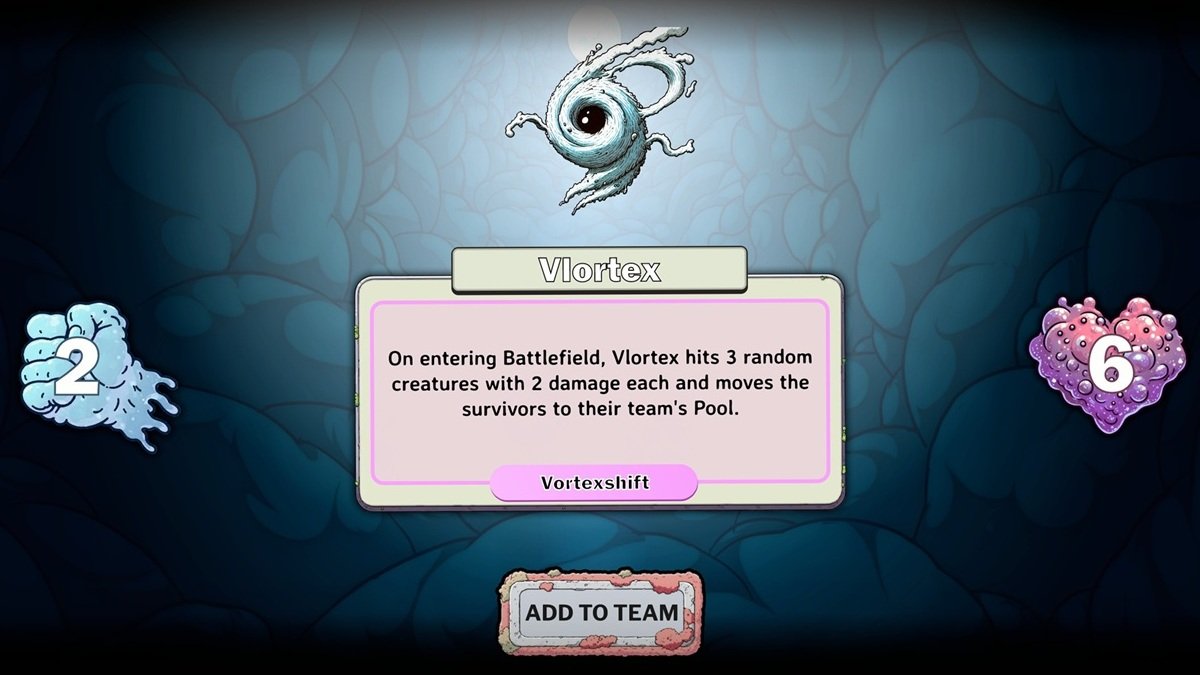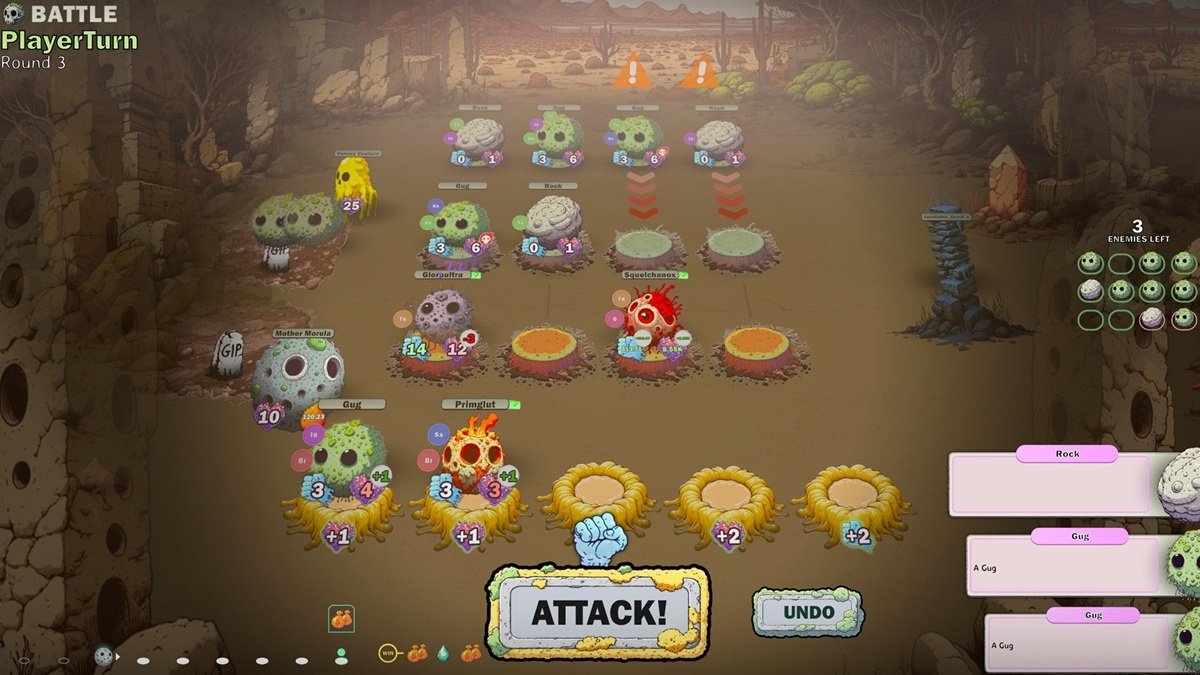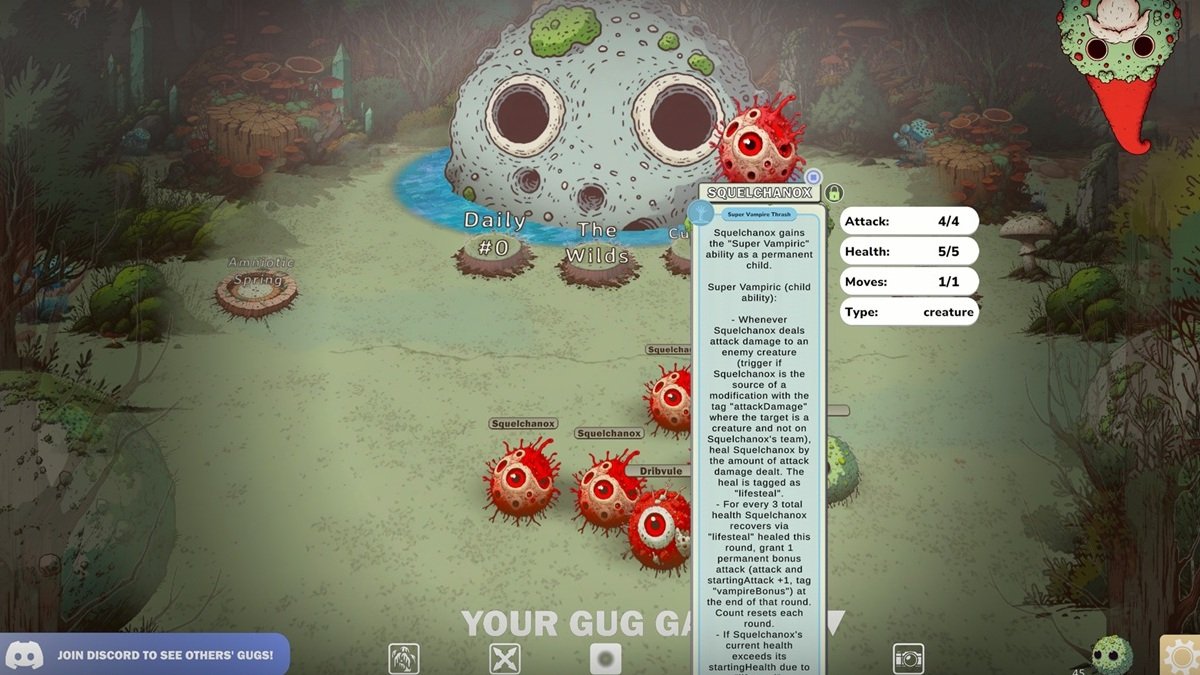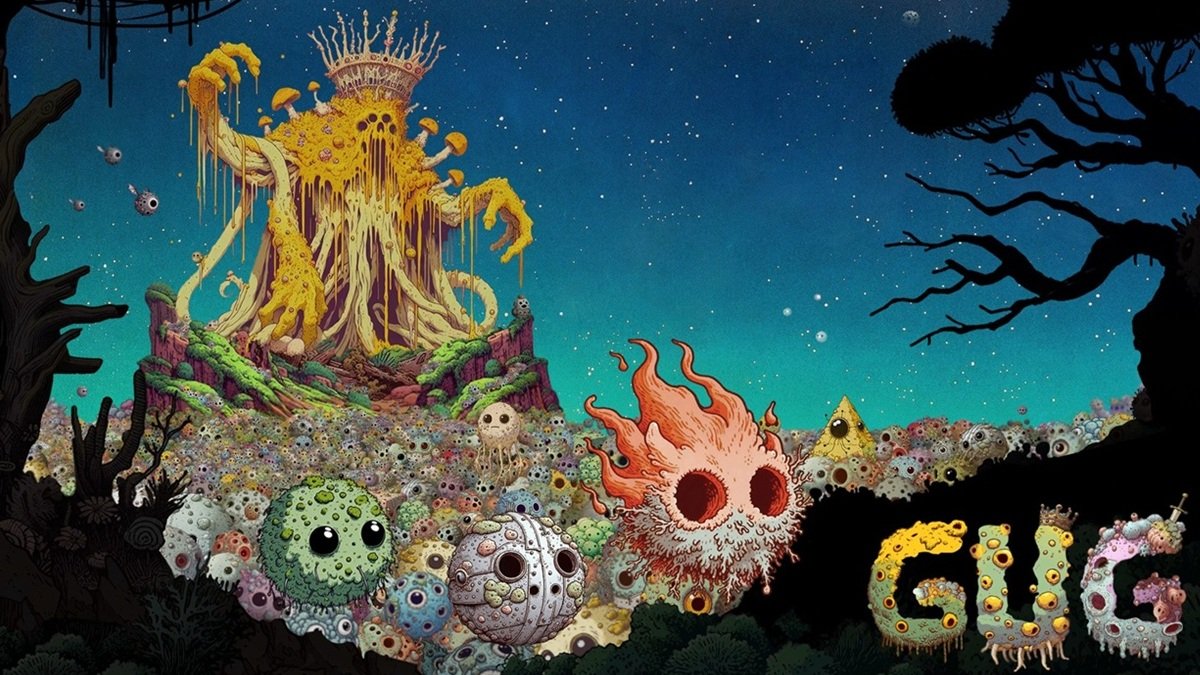This review follows Output Lag’s comprehensive review methodology.
About GUG
- Developer
- Martian Lawyers Club
- Publisher
- Martian Lawyers Club
- Release Date
- August 12, 2025
- Platforms
It should be plainly obvious by now that, even though LLMs (large language models) are a gimmick, they’re a pretty powerful gimmick that will sometimes even trick people into thinking they’re interacting with an AI. For simplicity’s sake, I’ll refer to LLMs as AI for the purposes of this review, as most folks do nowadays, though there’s merit in keeping the difference in mind. With that out of the way, AI is a powerful tool (sometimes) that has gone way beyond anything previously pushed by the world’s resident techbros. It can even run video games, in fact, and I don’t mean those weird, questionable mobile phone ads that you might’ve seen before. No, actual full-featured PC games. Like GUG.
Well, alright, I may be a tad bit charitable here. GUG is weird. It’s a fever dream come to life, and I mean this in the nicest way possible. This is genuinely not a critique, because seeing GUG in motion brought back memories of the old Prophet comic book I read years and years ago. Not the original Rob Liefield run, mind, but the 2012 revival that often feels genuinely strange and alien in the best way possible. GUG has shades of that, and that’s very high praise coming from me.

Let’s circle back to this, however. Context first! GUG is a turn-based creature battler. Kind of. It’s a Roguelike survival title, too. Kind of. GUG is hard to put into words because large chunks of it change on-the-fly, though the game looks and feels far more complicated than it actually is, in my experience.
The rough outline of GUG is that you take a small gang of strange, (potentially) organic freak-blobs into open combat against other (potentially) organic freak-blobs to… well, to see what kind of strange, broken interactions might crop up. There’s no meta-progression from what I’ve seen outside of a small handful of additional gameplay options such as daily runs and custom modes, and the crux of it all falls upon your bespoke Gug Garden.
The Gug Garden is ostensibly GUG‘s main menu: it’s a customizable biome that plays host to Mother Morula, your de facto in-game avatar. Mother Morula basically grants you the ability to reshape your Gugs’ genetic makeup on-the-fly as the interactive bit of the game’s underlying large language model. You can drag any Gug into Morula’s Amniotic Spring, which brings up an input field. Input… anything, and Morula will use your information to reshape the Gug into… something.
I’m not being vague on purpose here, mind: GUG leans heavily into its LLM to drive forward its ruleset, and its ruleset rests squarely on the titular creatures’ non-existent shoulder bones. Now, there’s no replacement for Mother Morula as far as I can tell, though the game definitely feels like it’s got room for different LLM avatars. Your squad of weirdo gugs is often going to come across “boss” encounters where Mother Morula-level beings square off against you, so the expectation is there for you to be able to maybe even generate a different boss creature as a Morula stand-in.

That never happened on my end, which brings me to what is either going to be a huge boon, or GUG‘s biggest problem depending on your preferences: the lack of explanation. You can and will figure out all you need to know simply by interacting with GUG and reading up on your Gugs’ abilities, but the game hardly ever stops to tell you the what, why, and how of anything. Worse, the way you interact with most of the gameplay mechanics is unsatisfying and clumsy: you just pick up a Gug and drag it to an a stump with the appropriate option hovering over it. This can certainly work well, but much like the majority of GUG‘s UI, it’s simply not executed well.
In my book, UI and UX are GUG‘s biggest issues. I don’t particularly mind the fact that large chunks of the game are AI-generated, and in fact even find these features enjoyable. The Gugs you’ll come across are often downright insane, and the game makes no attempt at properly balancing most things. GUG will break, inevitably, and seeing how it all comes apart honestly is half the fun. No, interacting with all the stuff in the game is the problem, instead: though each asset is pretty decent on its own, at worst, they all come together in an oddly amateurish and unpolished way. Had the developer chosen a different (and consistent!) font for the game, the whole thing would already feel much more spruced-up if you ask me.
Really though, GUG fails to hide the fact that it’s a fancy, skinned-up LLM interface, and for this I find it broadly comparable to the likes of MTG Forge. This isn’t a critique in and of itself, but Forge is simply a ruleset driver for a certain emblematic card game, while GUG wants to be a genuine video game, and you’d expect slightly more from the latter.
Please don’t misunderstand: GUG can be fun, it’s just that it needs a few more polishing passes before it feels like it’s actually fully baked.

As far as its creature and mechanic-generating systems go, this is absolutely the killer feature of the game, and probably the bit you’ll have most fun with. Some of the Gugs and abilities you’ll come across are literally game-breaking to the point of trivializing the entire gameplay loop, but I find that the game is hard enough that you specifically do want at least a single god-tier Gug even early on. You’ll get pummeled with a constant array of chip-level damage on the second round of combat if you’re unlucky enough, and so dealing with it is going to be at the top of your priority list.
What I did to smooth things over was to generate a “Super Vampire” Gug that heals from damage every turn and powers-up based on its damage dealt. It didn’t take long before my Squelchanox was dealing tens of thousands of damage points, but I still lost because Mother Morula got overwhelmed by half-a-dozen weakling enemy Gugs in a late-game arena.
GUG can be an extremely fun game, and I don’t think I’d be nearly as strict with it as I now am if it was an obviously flawed product. It isn’t, though, and further polishing and improvements could bump it up from a solid 6 all the way to a tentative 8 in my book. For that to happen, though, the developer would also need to take a look at its AI-generative feature-set, because most Gugs simply look too similar to one another. Worse, it won’t take much experimentation before you generate one that’s outright broken, with an ‘ERROR’ message plastered over it.
Take it as it is, then: GUG is a phenomenal proof of concept that I genuinely hope the developer continues working on. In its launch-day version, though, it’s also an arguably unfinished and objectively unpolished game that could do much, much more to drive its vision of LLM-driven gameplay home. I’ll still continue playing it, though! I haven’t been able to leverage the feature pre-release, but GUG promises a Spore-alike level of community integration with Gug sharing and whatnot, and this is likely to be a huge boon in the long run. Not likely to be a huge draw if you’re jumping in early though it is something to keep in mind.
This review is based on a retail build of the game provided by the publisher.




